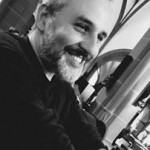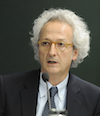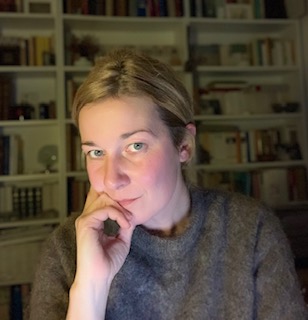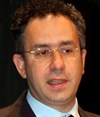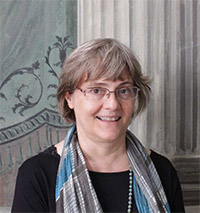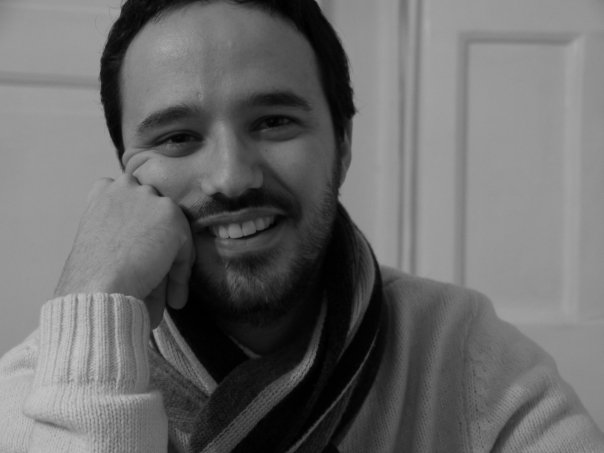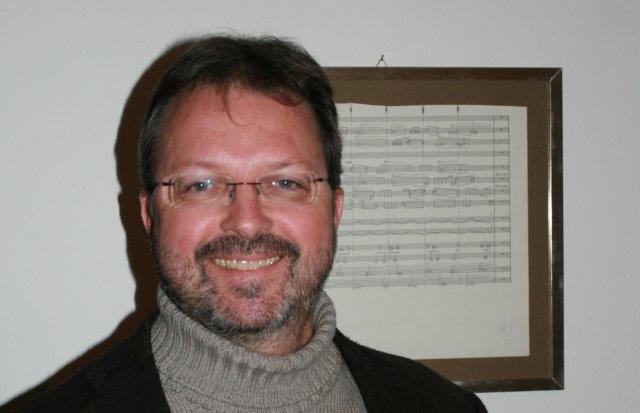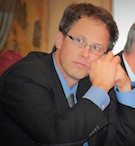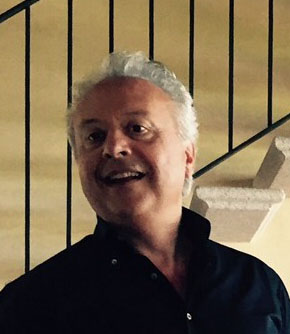Studying at the University of Verona
Here you can find information on the organisational aspects of the Programme, lecture timetables, learning activities and useful contact details for your time at the University, from enrolment to graduation.
Academic calendar
The academic calendar shows the deadlines and scheduled events that are relevant to students, teaching and technical-administrative staff of the University. Public holidays and University closures are also indicated. The academic year normally begins on 1 October each year and ends on 30 September of the following year.
Course calendar
The Academic Calendar sets out the degree programme lecture and exam timetables, as well as the relevant university closure dates..
| Period | From | To |
|---|---|---|
| Sem 1A | Sep 23, 2019 | Oct 31, 2019 |
| Sem 1B | Nov 11, 2019 | Jan 11, 2020 |
| Sem 2A | Feb 17, 2020 | Mar 28, 2020 |
| Sem 2B | Apr 6, 2020 | May 30, 2020 |
| Session | From | To |
|---|---|---|
| Sessione d'esame invernale | Jan 13, 2020 | Feb 15, 2020 |
| Sessione d'esame estiva (gli esami sono sospesi durante la sessione di laurea) | Jun 3, 2020 | Jul 25, 2020 |
| Sessione d'esame autunnale | Aug 24, 2020 | Sep 19, 2020 |
| Session | From | To |
|---|---|---|
| Sessione di laurea estiva | Jul 6, 2020 | Jul 11, 2020 |
| Sessione di laurea autunnale 19-20 | Nov 2, 2020 | Nov 7, 2020 |
| Period | From | To |
|---|---|---|
| Festa di Ognissanti | Nov 1, 2019 | Nov 1, 2019 |
| Sospensione delle lezioni | Nov 2, 2019 | Nov 2, 2019 |
| Festa dell'Immacolata | Dec 8, 2019 | Dec 8, 2019 |
| Vacanze di Natale | Dec 23, 2019 | Jan 6, 2020 |
| Vacanze di Pasqua | Apr 10, 2020 | Apr 14, 2020 |
| Festa della Liberazione | Apr 25, 2020 | Apr 25, 2020 |
| Festa del Lavoro | May 1, 2020 | May 1, 2020 |
| Sospensione delle lezioni | May 2, 2020 | May 2, 2020 |
| Festa del Santo Patrono | May 21, 2020 | May 21, 2020 |
| Sospensione delle lezioni | May 22, 2020 | May 23, 2020 |
| Festa della Repubblica | Jun 2, 2020 | Jun 2, 2020 |
| Vacanze estive | Aug 10, 2020 | Aug 15, 2020 |
Exam calendar
Exam dates and rounds are managed by the relevant Culture and Civilisation Teaching and Student Services Unit.
To view all the exam sessions available, please use the Exam dashboard on ESSE3.
If you forgot your login details or have problems logging in, please contact the relevant IT HelpDesk, or check the login details recovery web page.
Should you have any doubts or questions, please check the Enrollment FAQs
Academic staff

Bassetti Massimiliano
 massimiliano.bassetti@univr.it
massimiliano.bassetti@univr.it
 045802 8376
045802 8376
 andrea.chiurato@univr.it
andrea.chiurato@univr.it
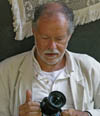
Mastrocinque Attilio
 attilio.mastrocinque@univr.it
attilio.mastrocinque@univr.it
 +39 045802 8386
+39 045802 8386
 dino.piovan@univr.it
dino.piovan@univr.it

Rocconi Eleonora
 eleonora.rocconi@univr.it
eleonora.rocconi@univr.it
 alberto.scandola@univr.it
alberto.scandola@univr.it
Tani Stefano
 stefano.tani@univr.it
stefano.tani@univr.it
 +39 045802 8110
+39 045802 8110
 luciamaddalena.tissi@univr.it
luciamaddalena.tissi@univr.it
 carlo.vannini@accademiabelleartiverona.it
carlo.vannini@accademiabelleartiverona.it
Study Plan
The Study Plan includes all modules, teaching and learning activities that each student will need to undertake during their time at the University.
Please select your Study Plan based on your enrollment year.
1° Year
| Modules | Credits | TAF | SSD |
|---|
1 module to be chosen among the following2 modules to be chosen among the following1 module to be chosen between the following2° Year activated in the A.Y. 2020/2021
| Modules | Credits | TAF | SSD |
|---|
2 modules to be chosen among the following1 module to be chosen among the following1 module to be chosen among the following| Modules | Credits | TAF | SSD |
|---|
1 module to be chosen among the following2 modules to be chosen among the following1 module to be chosen between the following| Modules | Credits | TAF | SSD |
|---|
2 modules to be chosen among the following1 module to be chosen among the following1 module to be chosen among the following| Modules | Credits | TAF | SSD |
|---|
Legend | Type of training activity (TTA)
TAF (Type of Educational Activity) All courses and activities are classified into different types of educational activities, indicated by a letter.
History of Italian literary language (m) (2020/2021)
Teaching code
4S007403
Teacher
Coordinator
Credits
6
Language
Italian
Scientific Disciplinary Sector (SSD)
L-FIL-LET/12 - ITALIAN LINGUISTICS
Period
CuCi IIA dal Feb 15, 2021 al Apr 1, 2021.
Learning outcomes
Aim of the course is offering a knowledge of the history of literary Italian language, with specific attention to the language of prose, and improving the ability to independently analyze the texts of Italian tradition. The teaching proposes two specific formative objectives: 1) to transmit a systematic vision of the language of Italian prose, in its diachronic evolution (from its origins to modernity) and its various formal components. 2) to analyze in depth a line or an author significant for the linguistic tradition of Italian prose, showing the implications of his language with the other elements of the stylistic system (narrative structures, argumentative processes, discursive approach). At the end of the course students are expected to be able to operatively apply the acquired knowledge and, therefore, to independently proceed to the linguistic analysis of a text in Italian literary prose, as preliminary element for its overall interpretation.
Program
SYLLABUS
The two novels of 1889. Through the reading and linguistic and stylistic analysis of the novels Il piacere and Mastro-don Gesualdo (both published in 1889) the course aims to bring out the characteristics of the narrative of Decadentism and Verism, which in Italy develop in parallel and with very different outcomes.
The two novels by D'Annunzio and Verga will be compared with previous texts by the two authors (respectively, Terra vergine and Tigre reale) to highlight the evolution of their prose.
BIBLIOGRAPHY
Complete reading of the texts:
Gabriele d’Annunzio, Il piacere (qualsiasi edizione)
Gabriele d’Annunzio, Terra vergine (qualsiasi edizione)
Giovanni Verga, Mastro-don Gesualdo (recommended edition: Einaudi 1992 and reprints, edited by di Giancarlo Mazzacurati)
Giovanni Verga, Tigre reale
Papers:
Maurizio Dardano, Romanzo, in Storia dell’italiano scritto. II. La prosa letteraria, a cura di Giuseppe Antonelli, Matteo Motolese, Lorenzo Tomasin, Roma, Carocci 2014, pp. 359-420.
Giancarlo Alfano, L’anno 1889, in Il romanzo in Italia. II. L’Ottocento, a cura di Giancarlo Alfano e Francesco de Cristofaro, Roma, Carocci 2018, pp. 307-21.
Gian Luigi Beccaria, Figure ritmico-sintattiche della prosa dannunziana, in Id., L’autonomia del significante. Figure del ritmo e della sintassi in Dante, Pascoli, D’Annunzio, Torino, Einaudi 1989, pp. 285-318.
Angelo Piero Cappello, Gabriele d’Annunzio, la questione della lingua e l’italiano contemporaneo, in D’Annunzio e la lingua italiana d’oggi, 42° Convegno nazionale di studi, 26-28 novembre 2015, «Rassegna Dannunziana», a. XXXIV, n. 69-71 (2018), pp. 54-97.
Francesco Bruni, Sulla lingua del Mastro-don Gesualdo, in Id., Prosa e narrativa dell’Ottocento. Sette studi, Firenze, Franco Cesati 1999, pp. 235-92.
| Author | Title | Publishing house | Year | ISBN | Notes |
|---|---|---|---|---|---|
| Gian Luigi Beccaria | Figure ritmico-sintattiche della prosa dannunziana, in Id., L’autonomia del significante. Figure del ritmo e della sintassi in Dante, Pascoli, D’Annunzio, pp. 285-318 | Einaudi | 1989 | ||
| Angelo Maria Cappello | Gabriele d’Annunzio, la questione della lingua e l’italiano contemporaneo, in D’Annunzio e la lingua italiana d’oggi, 42° Convegno nazionale di studi, 26-28 novembre 2015, «Rassegna Dannunziana», a. XXXIV, n. 69-71 (2018), pp. 54-97 | 2018 | |||
| Giancarlo Alfano | L'anno 1889, in Il romanzo in Italia. II. L’Ottocento, a cura di Giancarlo Alfano e Francesco de Cristofaro, pp. 307-21 | Carocci | 2018 | ||
| Maurizio Dardano | Romanzo, in Storia dell’italiano scritto. II. Prosa letteraria, pp. 359-420 | Carocci | 2014 | ||
| Francesco Bruni | Sulla lingua del Mastro-don Gesualdo, in Id., Prosa e narrativa dell’Ottocento. Sette studi, pp. 235-92. | Franco Cesati | 1999 |
Examination Methods
The exam is an interview and is intended to ascertain the knowledge relating to the topics covered during the course and the ability to analyze and interpret the texts.
Type D and Type F activities
| years | Modules | TAF | Teacher |
|---|---|---|---|
| 1° 2° | The origins of Christianity | F |
Augusto Barbi
(Coordinator)
|
| years | Modules | TAF | Teacher |
|---|---|---|---|
| 1° 2° | Laboratory of ancient greek | F |
Dino Piovan
(Coordinator)
|
| 1° 2° | Latin Laboratory | F |
Giulia Beghini
(Coordinator)
|
| 1° 2° | Opera Workshop | F |
Nicola Pasqualicchio
(Coordinator)
|
| 1° 2° | Presente e futuro del pianeta. economia, sostenibilità e politiche | F |
Gian Maria Varanini
(Coordinator)
|
| years | Modules | TAF | Teacher |
|---|---|---|---|
| 1° 2° | The origins of Christianity | F |
Augusto Barbi
(Coordinator)
|
| years | Modules | TAF | Teacher |
|---|---|---|---|
| 1° 2° | Convegno internazionale “la questio de aqua et terra di dante alighieri: testo e contesto” | F |
Paolo Pellegrini
(Coordinator)
|
| 1° 2° | Laboratory of ancient greek | F |
Dino Piovan
(Coordinator)
|
| 1° 2° | Latin Laboratory | F |
Giulia Beghini
(Coordinator)
|
| 1° 2° | Opera Workshop | F |
Nicola Pasqualicchio
(Coordinator)
|
| 1° 2° | Presente e futuro del pianeta. economia, sostenibilità e politiche | F |
Gian Maria Varanini
(Coordinator)
|
| 1° 2° | Un patrimonio urbano da ri-conoscere e ri-valutare: ville e palazzi storici di verona e circondario | F |
Gian Maria Varanini
(Coordinator)
|
| years | Modules | TAF | Teacher |
|---|---|---|---|
| 1° 2° | Giornate fai di primavera (1 cfu) | F |
Monica Molteni
(Coordinator)
|
| 1° 2° | Laboratory of photo | F |
Carlo Vannini
(Coordinator)
|
| 1° 2° | Laboratory of ancient greek | F |
Dino Piovan
(Coordinator)
|
| 1° 2° | Humanistic informatics laboratory (m) | F |
Stefano Minozzi
(Coordinator)
|
| 1° 2° | Latin Laboratory | F |
Giulia Beghini
(Coordinator)
|
| 1° 2° | Worshop for cultral events | F | Not yet assigned |
| years | Modules | TAF | Teacher |
|---|---|---|---|
| 1° 2° | Fai un giro in villa (1 cfu) | F |
Monica Molteni
(Coordinator)
|
| 1° 2° | Laboratory of ancient greek | F |
Dino Piovan
(Coordinator)
|
| 1° 2° | Humanistic informatics laboratory (m) | F |
Stefano Minozzi
(Coordinator)
|
| 1° 2° | Latin Laboratory | F |
Giulia Beghini
(Coordinator)
|
| 1° 2° | Worshop for cultral events | F | Not yet assigned |
| years | Modules | TAF | Teacher |
|---|---|---|---|
| 1° 2° | Summer School internazionale in Studi danteschi Ravenna-Verona | F |
Paolo Pellegrini
(Coordinator)
|
| 1° 2° | Univero’ 2019 | F | Not yet assigned |
Career prospects
Module/Programme news
News for students
There you will find information, resources and services useful during your time at the University (Student’s exam record, your study plan on ESSE3, Distance Learning courses, university email account, office forms, administrative procedures, etc.). You can log into MyUnivr with your GIA login details: only in this way will you be able to receive notification of all the notices from your teachers and your secretariat via email and soon also via the Univr app.
Graduation
List of theses and work experience proposals
| theses proposals | Research area |
|---|---|
| tesi di Glottologia, Storia comparata, Linguistica storica | ENGLISH LANGUAGE - Grammar and Syntax – Grammatik und Syntax |
| tesi di Glottologia, Storia comparata, Linguistica storica | GERMANIC LANGUAGE - Dialectology - Dialektologie |
| tesi di Glottologia, Storia comparata, Linguistica storica | HUMANITIES & SOCIAL STUDIES - HUMANITIES & SOCIAL STUDIES |
| tesi di Glottologia, Storia comparata, Linguistica storica | Indo-European languages & literatures - Indo-European languages & literatures |
| tesi di Glottologia, Storia comparata, Linguistica storica | LINGUISTICS - LINGUISTICS |
Gestione carriere
Linguistic training CLA
Double Degree
The University of Verona, through a network of agreements with foreign universities, offers international courses that enable students to gain a Double/Joint degree at the time of graduation. Indeed, students enrolled in a Double/Joint degree programme will be able to obtain both the degree of the University of Verona and the degree issued by the Partner University abroad - where they are expected to attend part of the programme -, in the time it normally takes to gain a common Master’s degree. The institutions concerned shall ensure that both degrees are recognised in the two countries.
Places on these programmes are limited, and admissions and any applicable grants are subject to applicants being selected in a specific Call for applications.
The latest Call for applications for Double/Joint Degrees at the University of Verona is available now!
Student mentoring
Requisiti classi di abilitazione insegnamento
Requisiti necessari per accedere alle classi di abilitazione per l'insegnamento.
vedi allegato pdf
Inoltre, per informazioni sui 24 CFU nelle discipline antropo-psico-pedagogiche e nelle metodologie e tecnologie didattiche, si veda -> LINK
Documents
| Title | Info File |
|---|---|
|
|
pdf, it, 307 KB, 30/11/21 |
